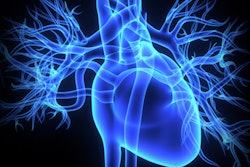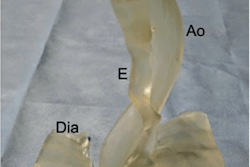"Occlusion balloon catheters are essential to assisting in the endovascular coiling of brain aneurysms, but the performance and pressure requirements of different balloon types when used in aneurysmal defects are currently unknown," presenter Joseph Knox, a medical student at the University of California, San Francisco, told AuntMinnie.com.
To bolster endovascular coiling procedures, Knox and colleagues created 3D-printed models of brain vessels with aneurysms using a commercial 3D printer. They also constructed a pressurized box to house the 3D-printed vessels and superficially replicate physiologic blood flow.
The researchers used fluoroscopy to evaluate three different occlusive balloon catheters in the 3D-printed model. The tests showed that the smaller-length balloon catheters required less pressure to accurately fit the aneurysms and appeared to be most suitable for larger aneurysms.
"This result could inform operators of optimal balloon type and size when trying to minimize balloon pressure in fragile brain aneurysms," Knox said.



















